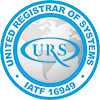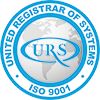Smart Glass is defined as glass that changes transparency and opacity in response to external stimuli, such as electricity or heat. Smart Glass is currently used to control various types of light in the architectural, automotive, interior, and product design industries.
Synonyms for Smart Glass include:
- LCG® – Light Control Glass
- Switchable Glass
- Switchable Film
- Smart Film
- Smart Tint
- Tintable Glass
- Privacy Glass
- Dynamic Glass
- Electric Frosting Glass
- Electric Opaque Glass
Smart Glass technology uses electricity to control various forms of light (visible, IR, UV). When the power is off, molecules are randomly scattered making the glass opaque. When switched on, the molecules align making the glass transparent.
In the context of glass, LCG® stands for light control glass. LCG® technology developed by Gauzy allows glass to change from transparent to varying degrees of opaque.
Yes! Existing glass can become Smart Glass by applying switchable films to the glass. Gauzy offers retrofit films available with both a dry or a wet adhesive for easy installation by professionals on any glass.
- Windows
- Doors
- Digital signage
- Skylights
- Interior privacy partitions
- Cars, trains and aeronautics
- TV Studios
- Ultrasound rooms
- Galleries, where art can be damaged by sun exposure
Smart Glass can be used to create privacy or an open atmosphere when applied to the following:
- Windows
- Doors
- Digital signage
- Skylights
- Interior privacy partitions
- Cars, trains, boats and planes
- TV Studios
- Ultrasound rooms
- Galleries, where art can be damaged by sun exposure
Soundproof glass is made of laminated glass. Smart Glass is also laminated, so when applied to an insulating glass unit (IGU) with an air gap in between, the result is Soundproof Smart Glass. Factors including the thickness and air space between the glass determine how soundproof the glass will be.
In its simplest definition, Smart Glass technology alters the amount of light transmitted through typically transparent materials, allowing these materials to appear as transparent, translucent, or opaque. Smart Glass technology includes PDLC and SPD.
There are two primary types of Smart Glass in the market:
- Active – active Smart Glass requires an electrical charge to work. Examples include Suspended Particle Device (SPD), Polymer Dispersed Liquid Crystal (PDLC) & Electrochromic (EC).
- Passive – passive Smart Glass doesn’t require an electrical charge to work. Examples include thermochromic and photochromic.
Polymer Dispersed Liquid Crystal (PDLC) is a type of active Smart Glass technology that allows glass to change from transparent to opaque on demand.
SPD stands for Suspended Particle Device. It’s a type of active Smart Glass technology that allows glass to change from transparent to opaque on demand.
Type | Difference |
PDLC (Indoor) |
|
PDLC (outdoor) |
|
SPD |
|
EC |
|
Smart Glass technologies use either transformers or controllers to manage power. Gauzy Smart Glass utilizes patented controllers that can maintain a continuous charge. Transformers have to be turned off for part of the day.
Smart Glass and Switchable Film are generally interchangeable terms for the same product. The PDLC or SPD technology is coated between two sheets of PET to create a switchable film that is laminated into, or applied onto, glass creating Smart Glass. Therefore, Switchable Film is used to create a Smart Glass product.
Smart Glass films can either be laminated into new glass or retrofitted onto existing glass:
- Laminated film is sealed between two pieces of new glass with PVB, EVA, or UA adhesive interlayers — forming one piece of glass
- Retrofit film can be adhered to the surface of existing glass with either wet or dry adhesive.
Preparing Smart Glass product specifications for architectural plans is a three-step process, involving investigation, research and selection of available products along with choice of supplier. Download Gauzy’s LCG Smart Glass CSI for more information.
Both! Gauzy’s Switchable Smart Glass can be used for interior partitions, exterior facades and automotive glazing.
Interior partitions in offices, hotels or residential buildings with Switchable Glass technology are considered Smart Glass partitions. These allow privacy or an open atmosphere on demand for user flexibility.
Gauzy supplies Smart Glass to large-scale interior design and building construction projects across the healthcare, hotel, residential, office, retail and automotive industries.
Gauzy serves regions across the globe. To find a certified Gauzy partner near you, visit our partners page.
Ready to upgrade your space? Contact Gauzy’s Smart Glass Experts today for a price quote.
Yes! Gauzy’s vizio line is optimized for rear projection. Vizio allows for HD videos and 180 degree viewing angles creating the best projection surface. Vizio is available in active (turns on and off) and passive (without switching) versions.
Smart Glass can be installed into a wide variety of partition styles, from floor-to-ceiling and half-rise partitions. The glass is suitable for aluminum, wood, or metal frames.
- Smart glass in Phoenix, Arizona
- Smart glass in San Francisco, California
- Smart glass in Los Angeles, California
- Smart glass in Denver, Colorado
- Smart glass in Washington, D.C.
- Smart glass in Orlando, Florida
- Smart glass in Miami, Florida
- Smart glass in Tampa, Florida
- Smart glass in Atlanta, Georgia
- Smart glass in Chicago, Illinois
- Smart glass in Indianapolis, Indiana
- Smart glass in Boston, Massachusetts
- Smart glass in Las Vegas, Nevada
- Smart glass in New York, New York
- Smart glass in Columbus, Ohio
- Smart glass in Austin, Texas
- Smart glass in Dallas, Texas
- Smart glass in Houston, Texas
- Smart glass in San Antonio, Texas
- Smart glass in Salt Lake City, Utah
- Smart glass in Ashburn, Virginia
- Smart glass in Seattle, Washington
With laminated smart glass, a sheet of PDLC or SPD film is cut and sealed between two panes of glass. It is ideal for new construction or renovation projects in which glass can be replaced. On the other hand, adhesive smart film is applied retroactively onto existing glass – making it great for existing projects.
- Smart glass in Brisbane, Australia
- Smart glass in Melbourne, Australia
- Smart glass in Sydney, Australia
- Smart glass in Vienna, Austria
- Smart glass in Toronto, Canada
- Smart glass in Shanghai, China
- Smart glass in Paris, France
- Smart glass in Hong Kong
- Smart glass in Bengaluru, India
- Smart glass in Mumbai, India
- Smart glass in Jakarta, Indonesia
- Smart glass in Dublin, Ireland
- Smart glass in Tel Aviv, Israel
- Smart glass in Kuala Lumpur, Malaysia
- Smart glass in Auckland, New Zealand
- Smart glass in Manilla, Philippines
- Smart glass in Singapore
- Smart glass in Cape Town, South Africa
- Smart glass in Johannesburg, South Africa
- Smart glass in Seoul, South Korea
- Smart glass in Bangkok, Thailand
- Smart glass in Dubai, UAE
| Third header | Third header | Third header |
|---|---|---|
| Third column | Third column | Third column |





